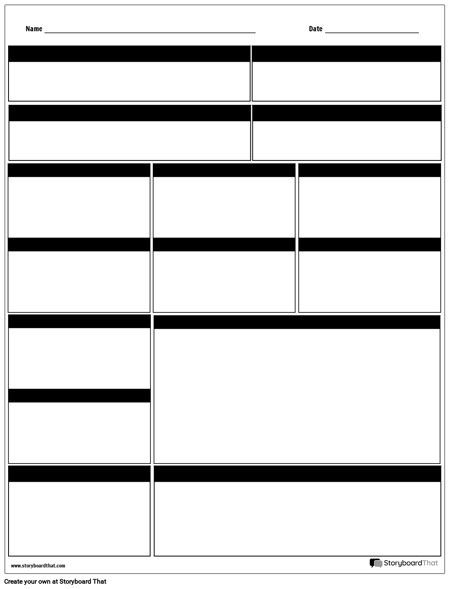Table Of Content

In a Stepped Wedge Design, all participants or clusters start off in the control group, and then, at different times, they 'step' over to the intervention or treatment group. This creates a wedge-like pattern over time where more and more participants receive the treatment as the study progresses. It's like rolling out a new policy in phases, monitoring its impact at each stage before extending it to more people. Multivariate Design has been a go-to method in psychology, economics, and social sciences since the latter half of the 20th century. With the advent of computers and advanced statistical software, analyzing multiple variables at once became a lot easier, and Multivariate Design soared in popularity. Well, sometimes it's just not practical to assign conditions at the individual level.

Types of Experimental Designs
A company in the product development phase creates multiple prototypes for testing. With a randomized selection, researchers introduce each test group to a different prototype. You should be able to create groups with an equal number of subjects and include subjects that match your target audience.
True Experimental Design
Typically, the researcher designs the treatment and randomly assigns subjects to control and treatment groups. Imagine coordinating a four-way intersection with lots of cars coming from all directions—you've got to make sure everything runs smoothly, or you'll end up with a traffic jam. Similarly, researchers need to carefully plan how they'll measure and analyze all the different variables. Pre-Experimental Designs are the basic, no-frills versions of experiments.
Experimental Design: Types, Examples & Methods
And that's exactly what the makers of Mushpit, one of the most visual exciting print publications on the market right now, have done. The graphic design and typography publication generated the thousands of individual covers using a variable data program called HP Mosaic. "They are shifted laterally in distances proportionate to the letter spacing." The adaptive font is basically a stop-gap until variable font technology has caught up with the needs of designers. "One of the key challenges we set ourselves was coming up with a type design that could adapt to a broad range of widths and weights without compromising its tone of voice," explains type design director Phil Garnham. This video discusses "blocking" as a method to control unwanted variation in experiments and thereby increase experimental power.
ANOVA is a statistical technique used to compare means across two or more groups in order to determine whether there are significant differences between the groups. There are several types of ANOVA, including one-way ANOVA, two-way ANOVA, and repeated measures ANOVA. Field experiments are conducted in naturalistic settings and allow for more realistic observations. However, because field experiments are not as controlled as laboratory experiments, they may be subject to more sources of error. Laboratory experiments are conducted under controlled conditions, which allows for greater precision and accuracy. However, because laboratory conditions are not always representative of real-world conditions, the results of these experiments may not be generalizable to the population at large.
When will I have access to the lectures and assignments?
For example, what if the kids in our math example get better at multiplication just because they're older or because they've taken the test before? That would make it hard to tell if the program is really effective or not. Imagine you're a coach trying to figure out the best strategy to win games. You wouldn't just look at how many points your star player scores; you'd also consider assists, rebounds, turnovers, and maybe even how loud the crowd is.
Artificial Intelligence-Based Lab Partner Designs, Runs Experiments in the Lab - Genetic Engineering & Biotechnology News
Artificial Intelligence-Based Lab Partner Designs, Runs Experiments in the Lab.
Posted: Wed, 20 Dec 2023 08:00:00 GMT [source]
A more effective experimental design for engineering a cell into a new state - MIT News
A more effective experimental design for engineering a cell into a new state.
Posted: Mon, 02 Oct 2023 07:00:00 GMT [source]
"There’s a lot of things that are very considered about it, like shapes and colour and how small the grid can get and how big the grid can get," says Pentagram partner Jody Hudson-Powell. So if you're struggling to find your creative mojo, get inspired by these 11 amazing projects, which all harness experimental design to push boundaries like never before. These experimental design projects will give you plenty to think about. A Latin square for an experiment with 6 conditions would by 6 x 6 in dimension, one for an experiment with 8 conditions would be 8 x 8 in dimension, and so on.
Pre-Experimental Design
With three conditions, there would be six different orders (ABC, ACB, BAC, BCA, CAB, and CBA), so some participants would be tested in each of the six orders. With four conditions, there would be 24 different orders; with five conditions there would be 120 possible orders. With counterbalancing, participants are assigned to orders randomly, using the techniques we have already discussed. Thus, random assignment plays an important role in within-subjects designs just as in between-subjects designs. Here, instead of randomly assigning to conditions, they are randomly assigned to different orders of conditions.

Experimental Designs
Imagine you're playing a video game where you can choose different paths. If you take one path and find a treasure chest, you might decide to continue in that direction. Sequential Design operates in a similar fashion, allowing researchers to make decisions at different stages based on what they've learned so far. Covariate Adaptive Randomization would make sure that each treatment group has a similar mix of these characteristics, making the results more reliable and easier to interpret. Because they use existing data to inform the current experiment, often fewer resources are needed to reach a reliable conclusion.
To understand the D-criterion (determinant), suppose we have a quadratic regression model2 with parameters β1 and β2 that relate the factor to the response (for simplicity, ignore β0, the intercept). This area will include the true values of both β1 and β2 in 95% (or some other desired proportion) of repeated executions of the design, and its size and shape are a function of the data’s overall variance and the design. Optimal design provides a principled approach to accommodating the entire range of concentrations and making full use of each shelf’s capacity. Experimental research design should be used when a researcher wants to establish a cause-and-effect relationship between variables. It is particularly useful when studying the impact of an intervention or treatment on a particular outcome.
The Solomon Four-Group Design is less commonly used than simpler designs but is highly respected for its ability to control for more variables. It's a favorite in educational and psychological research where you really want to dig deep and figure out what's actually causing changes. Companies often use this approach to figure out how different factors—like price, packaging, and advertising—affect sales. By studying multiple variables at once, they can find the best combination to boost profits.
Repeated Measures design is an experimental design where the same participants participate in each independent variable condition. This means that each experiment condition includes the same group of participants. The randomised block design is preferred in the case when the researcher is clear about the distinct difference among the group of objects. In this design, the experimental units are classified into subgroups of similar categories.

No comments:
Post a Comment